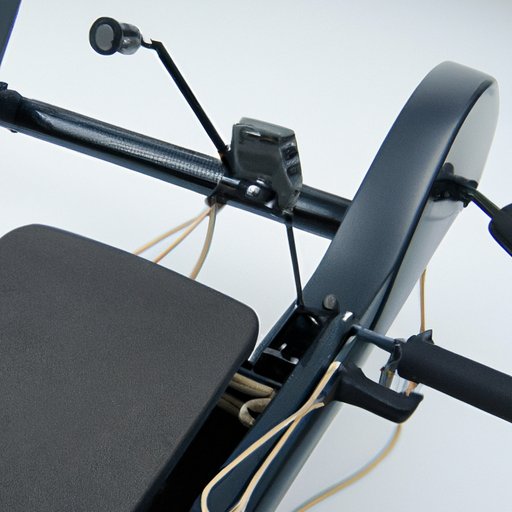I. Introduction
Rowing machines are gaining popularity as an effective piece of exercise equipment. They provide a full-body workout that promotes strength, endurance, and cardiovascular health. In this article, we will educate readers on how to use a rowing machine correctly to maximize its potential.
II. Benefits of Rowing Machines
Rowing machines offer a variety of benefits for those looking to get fit. Not only does it provide a full-body workout, but it can also be a great cardio and strength-training tool. Using a rowing machine regularly can increase heart and lung function, burn calories, and strengthen the muscles in your legs, back, and arms. For these reasons, we encourage readers to use a rowing machine in their daily fitness routine.
III. Proper Form and Technique
Proper form and technique are critical for getting the most out of a rowing machine workout and preventing injuries. To begin, position yourself on the seat with your feet strapped in and your hands grasping the handles. Keep your back straight and your shoulders relaxed. Begin by pushing off with your legs, then leaning back while pulling the handles toward your chest. Finish the stroke by returning to the starting position and repeat the sequence.
IV. Rowing Workouts
Rowing workouts can be tailored to meet different fitness levels and goals. For beginners, we suggest starting with a five-minute warm-up followed by 10 to 15 minutes of rowing at a comfortable pace. For intermediate and advanced levels, we recommend trying interval training, steady-state sessions, or using resistance settings to customize your workout. Additionally, you can challenge yourself by increasing the intensity of the workout or trying different techniques, such as the power stroke or the pyramid workout.
V. Maintenance and Cleaning
Maintenance and cleaning are essential to ensure optimal performance and longevity of the rowing machine. Regular cleaning of the machine and inspection of key parts will prevent the buildup of dirt and debris. Be sure to wipe down the seat and handles after each use, and check the components for wear and tear. In addition, lubricate the chain and check the tension on a regular basis for best results.
VI. Resistance Settings and Customization
Many rowing machines come with resistance settings that allow you to customize your workout according to your needs and goals. Resistance settings are often indicated by a number or color scheme. A higher setting indicates more effort, while a lower setting is less strenuous. When customizing your workout, start with a low setting and gradually increase as your fitness level improves. Experimenting with different settings and techniques will help you find what works best for your body and fitness goals.
VII. Common Rowing Mistakes and How to Avoid Them
It’s common to make mistakes when starting out with a rowing machine. Some of the most common are using improper technique, slouching, or hunching over the handles. These mistakes can lead to injuries and reduce the effectiveness of your workout. To avoid common mistakes, practice good posture, keep your shoulders relaxed, focus on your breathing, and follow the correct sequence for rowing. Always listen to your body and adjust your workout as needed.
VIII. Conclusion
Rowing machines are an excellent piece of equipment for anyone looking to get fit. By using proper form and technique, customizing your workout, and avoiding common mistakes, you can maximize your efforts and reach your fitness goals. We encourage readers to incorporate rowing into their daily fitness routine and never forget the importance of health and wellness.
Additional Resources:
